 Guided Missile Destroyer (2011-2027):
Guided Missile Destroyer (2011-2027):DDG-1000 Zumwalt, DDG-1001 Michael Monsoor, DDG-1002 Lyndon B. Johnson
For this 4th of July here is a presentation of the most impressive surface ship, outside aircraft carriers, in the USN inventory today. But also one of the most protracted and controversial naval procurement of the last 20 years. Some naval historians even compared these giant stealthy missile destroyer to the USS Long Beach, or to go back further in time, to the Alaska class battlecruisers. Are they indeed the next white elephants ? As we speak as of 2025, of the 32 ships planned on the original “escort cruiser” program to replace the Ticonderoga class cruiser, there are only a pair operational, the lead ship named after Admiral Elmo Zumwalt and M. Moonsoor. Lyndon B/ Johnson is yet to be commissioned. This story is also about replacing the legacy Iowa class battleships, but the artillery concept was also dropped and the project morphed several times, mixing its fortune with the DDG-X program as well. What is its current status, and are the Flight III Arleigh Burke the solution in the current geopolitical context ?
Development

The Zumwalt class is one of the most interesting and controversial naval procurement program of the 2000s, and easily the most symptomatic of the errands of the post-cold war USN reassessment of its capabilities and direction towards its surface fleet. In contrast, “core assets” such as the aircraft carriers and SSN/SSBN program never suffered many debates and continue their natural evolution. Today’s replacement of the Nimitz class, and the Los Angeles and Ohio class, with respectively the Gerald R. Ford, Virginia and Columbia class respectively seems to follow a more streamlined development. But the “classic” surface fleet -apart the Arleigh Burke- (fortunately the core of the surface fleet), all post Cold War programs seems to have suffered from the same pitfalls of a lack of clarity towards missions, in and arguably, rapidly changing and sometimes indecipherable world.
This, in a context of “dividends of peace” and budget constraints, while on the other hand having a deeply embedded military-industrial complex to feed. There are several examples showing these new program’s predicaments: The Littoral Combat ship program (Freedom-Independence class), and more recently the Constellation class. But nothing drew more attention than the spectacular Zumwalt class. Between their final cost and initial ambition, there is a lot to cover, and it’s arguably the most interesting of all these programs.
Cruiser or Destroyer ?
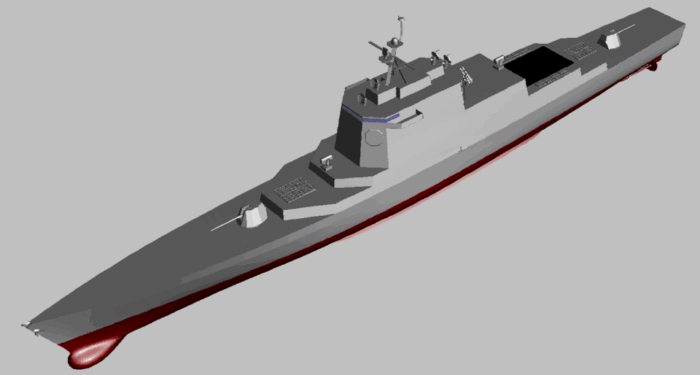
CGN(X) program, 3D impression (CC). This was 2008 development advocated by Electric Boat (EB) and Northrop Grumman Newport News (NGNN), notably to preserve their unique skills in nuclear-powered cruisers. 2011 evaluation was $600-$800 million per unit cost, not including R&D.
It is something of an evidence today, but the question is resurfacing again and again in the public: If the right place of a Battleship is now agreed to be in museums, why the USN is ditching out its cruisers without replacement ? First off, there was a time when a “cruiser” was a clearly identified type, compared to a destroyer. The core idea of a cruiser however was slowly dying in the West in general, incapable of affording such a ship as in the 1980s. Only USSR and the US kept these. In the US, the use of destroyer hulls, the Spruance class, to built AEGIS-centered Ticonderoga class cruisers already saw the lines blurring between the two types. This was further demonstrated with the Arleigh Burke class, which were destroyers and yet embarked an even more advanced variant of the AEGIS, which coupled with a powerful and versatile VLS battery made the “Tico” redundant.
The writing was already on the wall in 1990 when the “Burke” were started construction, and yet, this made many in the naval staff uncomfortable. Thus, a program to replace the “Tico” by a far more capable and larger vessel made sense, even with the end of the Cold War. This was the DDG-X program. It had two main tasks: Replacing the Ticonderoga class, but also the now retired Iowa class battleship, with good old conventional firepower, basically carrying more missiles and having command capabilities than a Burke, and mixing missiles and heavy artillery. After all, the Congress imposed for long to have this artillery capability almost as an insurance. Shells are far less expensive than cruise missiles, and there was still a large inventory of 16-inches shells in 1990.
So the CG(X) or “Next Generation Cruiser” was meant to be a heavily armed warship with advanced air and missile defence capabilities, but the program was cancelled in 2010 due to budget constraints and shifting priorities. It was replaced by the Flight III Burke class, which series was pushed from 90 to 99. Initially it was budgeted to $3.2 billion per ship and 19 were planned. On paper, based on their final specs, they were seriously large ships, and the only comparison coming to mind are the also cancelled Long beach class, of which only one ship was ever built, paired with the equally lone USS Enterprise back in the sixties. They were to displace 20,000–25,000 tons with a nuclear power and a new advanced Integrated Electric propulsion to feed future sensors and systems which were energy-heavy in futures upgrades over 30 years. There were around 128 to 256 VLS, but also a single turret with the new 155 mm (6 in)/62 calibre Advanced Gun System. The latter was supposed to be the coastal bombardment asset the Congress wanted to maintain, in order to replace the Iowa class.
The return of “heavy” artillery in the Navy has been an ongoing debate for decades. In the 1960s already, tested were performed with a 8-inches (203 mm) calibre, and for once, it’s the army that showed that a 155 mm calibre was more than enough, with the new generation of very long range, self-directing augmented ammunition. These shells were in a soft spot, far costlier than traditional “dumb” shells, but cheaper than cruise missiles. One of the cornerstone of the new cruiser program, started around 1995, would evolve into the Long Range Land Attack Projectile (LRLAP), which had its own development later in the weapons section.
The Roots: The CG-X program
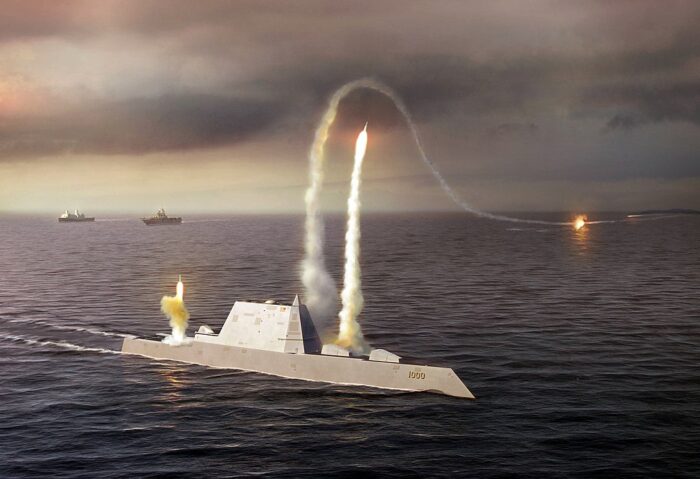
Post-Cold war Reassessments
The 1990s U.S. Armed Forces wanted to adapt to new threats but with readjusted budgets and the program was at first called the “Surface Combatant for the 21st Century” or SC-21 program. This pursued the tradition of “SC” named programs (for “surface ship”). Two ships were born from this initiative, DD-21 for the destroyer, CG-21 for the cruiser. Then came the budget cuts of November 2001. SC-21 became the “Future Surface Combatant program”. The DD-21 evolved into DD(X) and later ended its development as the Zumwalt-class. In April 2002, the DD(X) was recast again as a base for a whole family of surface combatants, with the CG(X) replacing the CG-21. The Ticonderoga-class cruisers were still planned to reach their service limit with 35 years in 2021-2029, so the first CG-X were supposed to be operational at least from 2012. However, it was later announced an upgrade program to extend their lives to 40 years, and this is why these 1980s vessels are still here today.
The CG(X) program was announced on 1 November 2001 with a requirement for eighteen of such missile cruisers, then nineteen to adjust to the “313-ship” Navy in 2005. This was before the rapid rise of the PLAN. The 2007 reassessment suggested the was split between a five proper CG(X) 20k tons cruisers and fourteen 12k “escort cruisers”. In the end, the former became 23,000 ton “ballistic missile defence ships”. New long range SAM and possibly even directed energy weapons were part of the mix, with political pressure to have these nuclear-powered, which was not the case for the cheaper “escort cruisers”. Then came fiscal year (FY)2009 budget. The first CG(X) was to be operational by 2011, a second commissioned in 2013.
2010 cancellation
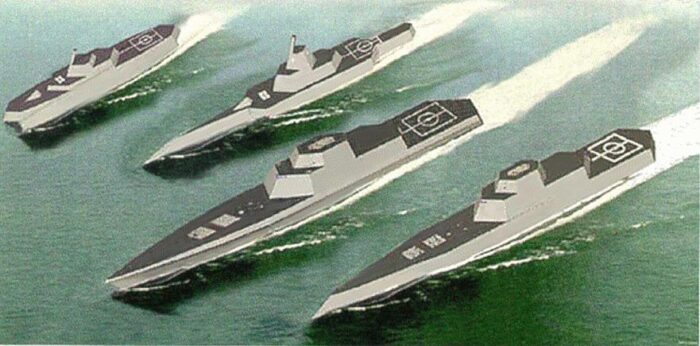
The DD-21 family of surface combatants of 2001, artist impression. On the left corner, the early Littoral Combat Ship concepts are shown. Lower corner, are the planned nuclear cruiser CG-21 and conventional DD-21 destroyer. Note the proposed hull shapes already. Official documentation of the time.
On 1 February 2010, U.S. President Barack Obama completely revised these plans in FY2011, cancelling the CG(X) program altogether. In the new Quadrennial Defence Review, the CG(X) was to be replaced by the DDG-51 Flight III (Burke) destroyers. In between, a new generation of advanced sensors could be integrated into their existing hulls as the Navy concluded itself, with better link to space-based sensors to artificially increase the detection bubble. So no need for a “super radar”.
The CG-X was cancelled, but all the R&D work performed for this near-decade was used for the Zumwalt class.
As of today, the navy still lacks a “cruiser”, and some are interrogating this “capability gap” when looking at some recent surface combatants in the PLAN, notably the Type 055 (Renhai class) guided missile cruisers (rated as such by the US). On paper, a Zumwalt class is only a destroyer by the stroke of a pen, and could be easily upgraded to such standards. In addition, one hope of the USN to have its cruiser replacement was in the design provision made to easily stretch the DDG-1000 hull by adding an extra section and create a CG-21 with relative ease.
From the DD-21 to the DDG-1000 program
So the current Zumwalt class traces its roots to the 2000 CG-X program split, from an “escort cruiser” that was conventionally powered, to an artillery ship, with one sticking feature of the “21st Century Destroyer” being the new Vertical Gun for Advanced Ships (VGAS). By 2001, Congress cut the program by half as part of SC21 program and this became DD(X), heavily reworked with a plan to acquire no less than 32 destroyers. Budget cuts reduced this to 24, then 7, to compensate for the costly R&D resulting of all the shining new tech that were ambitioned for this class, they were all experimental technologies. On 23 November 2005, the Defence Acquisition Board approved a plan to build the first two at Northrop Grumman’s Ingalls yard, Pascagoula, Mississippi and GD Bath Iron Works in Maine, but still needed Congress approval.
Vertical Gun for Advanced Ships
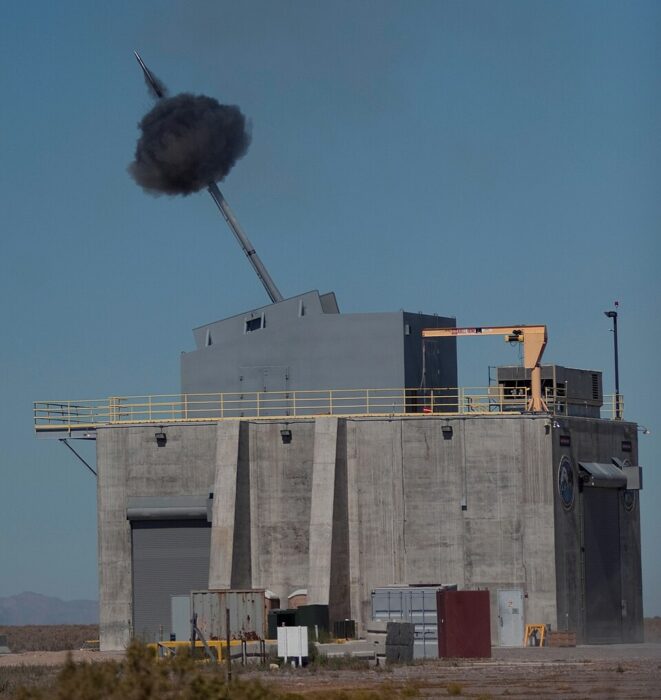
One of the linchpin of the surviving DDG-1000 project was to carry ideally two of the new 155 mm VGAS system. The core idea was to preserve a good ol’ heavy artillery capability in the Navy, but wit 21st century tech. That means super-accuracy, multirole shells, and very long range. In fact, cheaper substitutes to cruise missiles. Again, scale economics should bring the price of these shells down. With a rebranded program of 32 destroyer having two of these turrets each and large stocks per guns, this was manageable.
The Advanced Gun System (AGS) was developed and produced by BAE Systems Armaments & Services for the Zumwalt-class destroyer as the 155 mm/62 (6.1-inch) Mark 51, to provide long-range naval gunfire support on shore-based targets. Six were installed so far, two for each of the three Zumwalt-class ships, and they can only use a type of ammunition designed specifically for it, resulting in a procurement assessment by November 2016 of $800,000 to $1,000,000 per round, practically half the cost of a Tomahawk cruise missile. So the AGS was never given its ammunition and ended useless, with a removal planned in 2023…
Yet it’s unfortunate, as the 155 mm calibre is now the gold standard of howitzer and field guns in NATO, with immense stockpiles of existing rounds. Upgraded M109A7 Paladin (2015) of the US Army for example uses an infinitely cheaper XM1113 extended range (ER) artillery round capable of 40 km (25 mi) for a unitary cost of $14,484. Still, the Navy was promised a round that was capable of an amazing 83 nmi (150 km) with Long Range Land Attack Projectile (LRLAP). This is beyond the range of older SSMs. But is that extra range is worth the cost ? As a taxpayer, you judge…
More in the armament section below.
Timeline
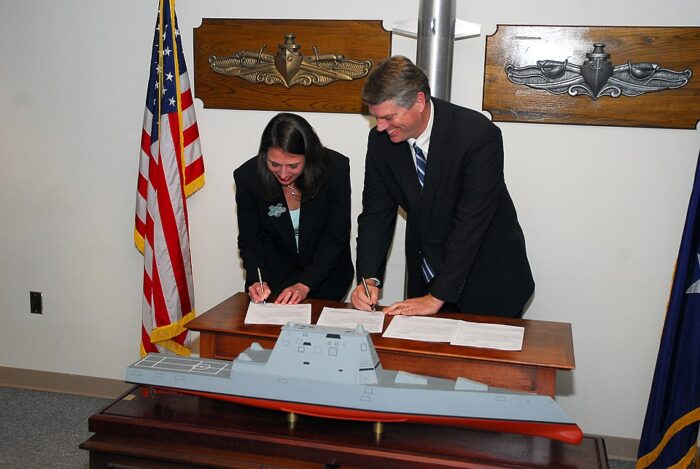
December 2005: The House and Senate agrees to continue funding the program. But the Congress limits funds to build a single “technology demonstrator”.
September 2006: The National Defence Authorization Act of 2007 is voted, but extended to two ships by the 2007 appropriations bill (US$2.568 billion)
31 July 2008: US Navy acquisition officials asked the congress to cancel the DDG-1000 program and adopt more Arleigh Burke-class destroyers instead. Only the two approved destroyers are to be built. For the Navy in the new geopolitical context, it made more sense to have eight more Burkes. There was a reassessment of new threats through 15 classified intel reports showing the DDG-1000 was now highly to new types of missile attacks. A Congressional subcommittee asked for a re-evaluation of the world threat picture. CNO Gary Roughead stress the need to address ballistic missiles and Hezbollah’s own SSMs. This push for more Burke is underlined by Navy Secretary Donald Winter on 4 September 2008.
19 August 2008: Winter declared that a third Zumwalt was to be built at Bath Iron Works, just to maintain shipbuilding capacity.
23 September 2008: House Defence Appropriations Subcommittee Chairman John Murtha agrees to partially funding it FY2009.
26 January 2009: A memo from DoD acquisition’s John Young, states a per ship cost at $5.964 billion, creating a breach of the Nunn–McCurdy Amendment. (It Requires the Navy to re-certify and re-justify the program to Congress or to cancel it).
6 April 2009: Sec. Def. Robert Gates announced the FY2010 budget restricts definitively the DDG-1000 program to three ships.
April 2009: The Pentagon awards a fixed-price contract with General Dynamics for these in place of Northrop Grumman’s at a unit price of $3.5 billion for the 1st ship, $2.5 billion for 2nd and third around $2 billion.
April 2016: USNI (U.S. Naval Institute) states a total cost including R&D of $22.5 billion or $7.5 billion per ship.
Construction
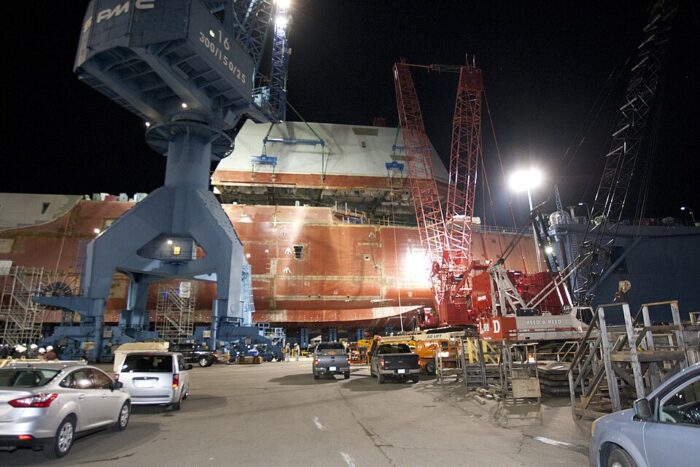
Late 2005: Detailed design and integration phase: Raytheon is the Mission Systems Integrator. Northrop Grumman Ship Systems, General Dynamics Bath Iron Works are tasked of the hull, mechanical, and electrical detailed design. BAE Systems provided the advanced gun system and Mk. 57 VLS. May other contractors and subcontractors has a part of the pie, the largest USN program at the time, such as Lockheed Martin, Northrop Grumman Sperry Marine, L-3 Communications. Nearly every state in the U.S. is involved.
September 2006: Decision is taken in September 2006 to fund two ships, at Bath Iron Works and Ingalls Shipbuilding.
13 November 2007: Northrop Grumman is awarded a $90M contract modification for materials and production.
14 February 2008: Bath Iron Works is awarded DDG-1000, Northrop Grumman Shipbuilding DDG-1001, $1.4 billion each.
11 February 2009: Full rate production commences on DDG-1000.
1st March 2010: Full rate production commences on DDG-1001.
17 November 2011: Keel laid down for DDG-1000
29 October 2013: DDG-1000 is launched.
To compare, the original timetable called for a construction start in 2008 and 2009, with the third in 2012 and completion of DDG-1000 in April 2013, full operational cap. in 2015 and commission of DDG-1002 in 2018. As of now, this is pushed down to 2028, so ten years later after being pushed back a first time in 2021.
Design of the class
Hull and general design
The many delays encountered by that class are linked to, according to the January 2009 Government Accountability Office (GAO), 12 critical technologies that needed full maturity. Six were “approaching maturity”, five would not be until after installation. That included the artillery system. The Zumwalt are striking by their large dimensions, superior even to Cold War cruisers, both in size and tonnage. It is 40% larger than an Arleigh Burke-class destroyer, and taunted as the largest and “most technologically advanced surface combatant in the world”.
This is traduced in tonnage and dimensions, with a record 15,656 long tons (15,907 t). Other sources give 15,995 metric tons. Navypedia states 14,564 tonnes standard and 15,600 tones full.
To put things into perspective, we need to go back to USS Long Beach to reach these figures. CHN-9 was indeed the largest missile-armed surface combatant before the Soviet Union’s 1970s Kirov class at 15,540 tons for more generous dimensions at 721 ft 3 in (219.84 m) overall.
The Zumwalt class is indeed much bulkier with an overall length of 610 ft (190 m) but a generous beam of 80.7 ft (24.6 m) versus 71 ft 6 in (21.79 m) on Long Beach and a draft of 27.6 ft (8.4 m) versus 30 ft 7 in (9.32 m). The larger hull and shorter length, plus the inverted bow and slab-sides shapes, dictated a new shape that was revolutionary at the time and the object of intense R&D to maintain the same level of seaworthiness and stability. The larger hull also took into consideration mobility and future extensions and additions, so ensuring to keep a favourable metacentric height for the foreseeable future, and for “stretching out” the hull for the still hoped CG-21 upgrade.
In all aspects, the Zumwalt is certainly striking, probably the most extreme, “brutalist” form of stealthiness applied to a warship worldwide. Albeit France was the first to present a Frigate (The Lafayette class) in 1990 with pronounced stealth characteristics, many stealth aspects (it’s on many levels beyond the hull shape alone) had been adopted already in the Arleigh Burke design, were worked on for the next gen Frigates or “Littoral Combat Ships”, and US R&D went all the way back to the experimental sea shadow (IX-529) in 1984.
The Zumwalt-class also reintroduces the tumblehome hull form, abandoned in 1905, but used for completely other advantages. It was reintroduced to reduce the radar return of the hull, instead of a 90° angled hull side. The inverted bow is both for stealth and designed to cut through waves rather than ride over them. Stability was the object of many debates, but computer work showed it worked, with well researched fluid mechanic models and was proven since workable on trials. So much so, the inverted bow is now more common (see recent FDI frigates from Naval Group).
Stealth researches set a pattern exploited to the full of the DDG-1000 program (see “protection” for more). The challenge was how to give such a large and complex combat ship the smaller radar signature possible. This led to the characteristic slab-side hull and massive bridge structure, sloped shapes, no protrusion, and everything hidden behind screens. A very “clean” design that is still today the reference for large stealthy ships, inspiring many copycats, albeit none went to the same length.
Powerplant
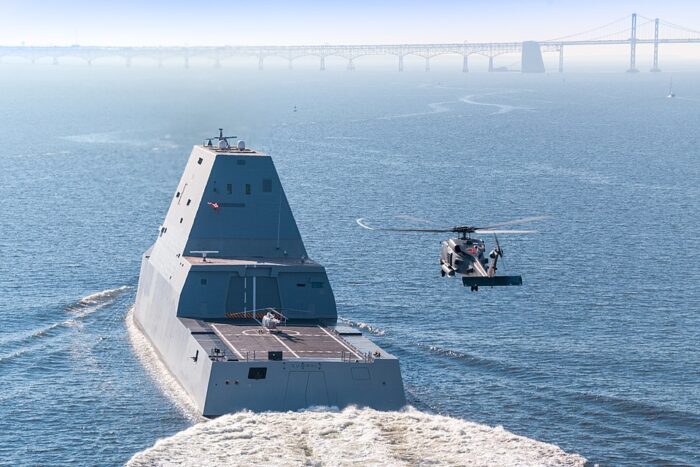
The Zumwalt-class also innovated in this area, by using an Integrated Power System (IPS), a modern version of a turbo-electric drive system. The latter is not new as Battleships already used it in 1917. However, the IPS is a dual system, as each half comprised a gas turbine as prime mover, directly coupled to an electrical generator. The latter providing power for an electric motor which in turn drives a propeller shaft. This means the connections uses no mechanical parts susceptible to have some friction, vibrations and produce noise. For ASW quietness, it’s already a must and part of the whole stealthiness of the ship. The second is that the system offers a greater flexibility, between speed on one hand, and the needs of the new, powerful radar and all sub-systems and weaponry. It also worked even with the ship stopped at anchor.
The system is “integrated”: Indeed the turbogenerators provide electrical power for all systems, in addition to the drive motors, unlike previous schemes where there was a split between power assignation. This means there is a great flexibility for more available electrical power, more than any other ship in the USN. This is, in part, to compensate for the absence of nuclear power, and to plan for future systems, like directed energy weapons (DEW) or replacement of the 155 mm artillery by electric guns, which was also planned.
The DDX original program even went the extra length of having a planned, Permanent Magnet-Synchronous Motors (PMMs). But for reasons of cost, it was discarded for a more conventional induction motor. Also cancelled, was the alternate twin pod arrangement. In R&D, it was established that the ramifications of pod drives would require too much development and also impact the final cost. The PMM in fact was later estimated a too great technology leap, added to the test, notably the new ambitious radar system, which was slashed by Congress. Northrop Grumman still for the program created as a feasibility prototype, the world’s largest permanent magnet motor, fabricated by DRS Technologies. In short PMM motor needed too much development time, and would have pushed back the DDG-1000 program further.
The Zumwalt class however obtained the Converteam’s Advanced Induction Motors (AIM) but still, there was a doubt on the exact choice of engine systems. The initial integrated power system (IPS) based on the PMMs was replaced by the less ambitious and already proven Advanced Induction Motors (AIM) as backup, and it was adopted in replacement by February 2005 in order to meet schedules. PMM technical issues were fixed since. It is still more advantageous compared to the AIM tech. That made for a heavier motor taking more space and uses a separate controller to reduce noise while only producing 1/3 voltage compared to the PMM. But time and cost penalties were a stronger incentive.
As said above, all was done also to reduce thermal and sound signature.
In the end, it’s all down to the pair of Rolls-Royce MT30 gas turbines (35.4 MW ea.). They are driving Curtiss-Wright electric generators.
The second pair, well separated by a bulkhead for safety and with automated fire extinguishers, RR4500 turbine generators (3.8 MW (5,100 hp) each).
The last piece of the puzzle are a pair of 2 Alstom Converteam electric motors that are driving the shafts in the end.
No photos of the propellers had been released, but they are likely modelled on those of submarines and drive at a lower rate to avoid any cavitation. This is very likely the same system installed as on later Arleigh Burke destroyers, Prairie-Masker.
The second ship of the class, Michael Monsoor, was however modified to receive a new gas turbine after experiencing problems in sea trials due to damaged turbine blades.
Overall, this figure of 97,920 + 10,440 hp is about 108,360 hp, but only 94,660 hp are used for the propulsion alone, it’s the maximal power rated, or governed. As usual, top speed is classified, but officially recognized as 30-31 knots as a baseline. To compare, the old USS Long Beach needed 80,000 shp (60 MW) for the same speed, but it was done using two nuclear reactors. To compared again, the Burke class destroyers use a more conventional power plant to reach 80, then 100,000 shp from three GE LM 2500 gas turbines at 2500 rpm.
The range seems also classified, albeit some sources claims it to 4,500 nm (8,334 km, 4,200 miles) at 20 knots, which seems an educated guest, and still enough to crisscross the Atlantic at flank speed. The quantity of gas turbine oil or consumption figures are unknown so far. The Burke’s range is 4,400 nmi at the same speed. Sea trials revealed some issues, however (see career).
Protection
Passive Protection
Stealth
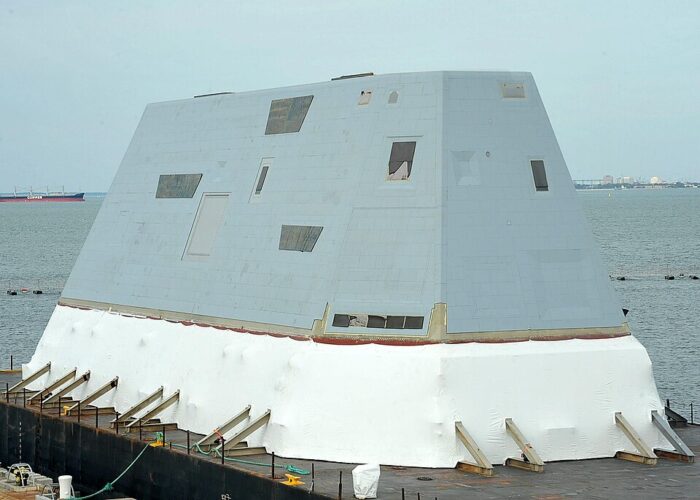
Zumwalt’s deckhouse in transit in November 2012
On this chapter, the best protection on a modern sensor environment is the same as for 5th gen. Aviation, stealth all the way. Better to detect and strike the enemy before being detected. This was proven time and again in WW2 when radar was still a developing technology. According to a Naval Sea Systems Command in charge of these features, the Zumwalt’s radar cross-section (RCS) is equivalent to a fishing boat. The tumblehome hull with composite deckhouse also reduce radar return, and its angular shaped makes it “50x harder to spot on radar than an ordinary destroyer”.
Returning to the soundproofing measures around the design of the power plant, its very likely that in addition to the near-absence or mechanical connections to the drive, only the muffled sound of turbine blades, the two gas turbines and electric motors compartments are “rafted”, ie. physically separated from the hull and mounted on shock-absorbent materials and sprung connections.
The acoustic signature globally is said to be comparable to that of the Los Angeles-class submarines, which is rather good for a surface ship, as in general, the acoustic signature never had been as cared for. There are water sleeting (Prairie again) along the sides. To reduce the thermal/infrared signature, passive cool air induction in the mack.
The centrepiece of this “toblerone on a knife” is its signature composite deckhouse. The 4-deck tall structure encloses most sensors and electronics. In 2008, Defence News reported sealing issues with the composite construction panels, but this was denied by Northrop Grumman in charge of this structure, which was brought on a barge to the shipyard.
It seems however the cost of these structures for the first two ships left the USN discontent with the price tag as a competition was launched for an alternative lower-cost steel deckhouse for DDG-1002 by January 2013. On 2 August 2013, a $212 million contract to General Dynamics Bath Iron Works put the yard in charge of it. USNI affirmed that a much smaller RCS was also planned, then dropped out of cost considerations. Paradoxically, the small radar signature is a navigation hazard for civilian navigation, as nobody in a restricted waterway had any idea of the size of the ship they see on their own navigation radar. To improve detection in these situations, especially on busy shipping channels, the Navy tested removable onboard reflectors to increase her radar visibility. However with time, man analysts put that extreme stealthiness into question as such ship was designed at first to provide Naval Surface Fire Support and near-shore waters are notoriously producing a cluttered radar image, so a ship is naturally protected the closest it is from land, with the addition of visual spotting… What is certain is no new naval construction is as extreme in stealth features as the Zumwalt are, despite some artist impressions for future projects might suggest.
Armor protection
This chapter is much more foggy. It is likely classified for the detail, perhaps consider superfluous given the level of stealthiness of the ship, but in case, the same scheme as the Burke class destroyer is likely used, namely:
Double-spaced steel layers to buffer the VLS and steering system, central operation, from anti-ship missiles detonations. Kevlar spall liners are also integrated into all these sensitive areas, also offering greater resistance to fire. On that chapter, there are automated fire-fighting systems all around, and automated piping rupture isolation. On-board sensors, which can displayed on any monitor if needed, could paint a picture of any critical and sub-system on board (like temperature parameters).
There is also likely an NBC system, standard since the 1970s. It comprises full sealing of the interior with air conditioning and slight overpressure, external detectors as well of any radiation, or chemical compound. There is probably also an external network of sprinklers to wash out the main structure and hull.
Lastly, the same compartmentation used for all previous ship in case of underwater damage is integrated in the hull structure, with a heavier compartmentation and double hull.
The Peripheral Vertical Launch System is also part of these protection measures: The Mk 57 PVLS is a missile launch system designed to avoid intrusions into the center space of the hull and reduce the risk of loss of the missile battery or magazine explosion. The pods inside VLS cells are distributed around the outer shell with a thin steel outer shell and thick inner shell. This directs the force of any explosion outward, like reactor bricks (ERA) found on main battle tanks or modern reactive armour blocks. Another inclusion from another armed branch of the US military, and unique feature of the class. This design also reduces the loss of missile capacity to just the affected pod. So far it was not adopted in any other design, at least known.
Active Protection
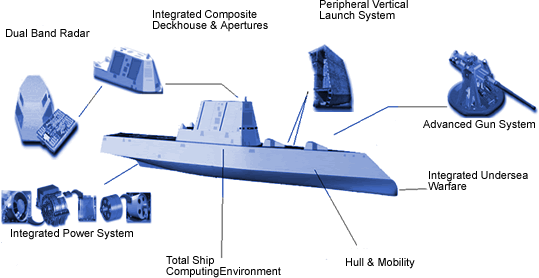
Armament
Advanced Gun System
The most controversial aspect of the design. The Advanced Gun System is a 155 mm (roughly 6 inches) 62 cal. Naval gun in a stealthy turret with two mounted on the foredeck, easily the most recognizable feature of the class. The gun was supposed to work with a large provision of the Long Range Land Attack Projectile (LRLAP). Essentially more a rocket than shell, with a warhead fired from the AGS gun (11 kg or 24 lb bursting charge). It was tested with a circular error probable of 50 meters but a range of 83 nautical miles (154 km). The turret were designed to be fully automated for the storage system and a total of 750 rounds between them.
The barrel normally hidden behind cover panels on top, erected when firing, and water-cooled to prevent overheating, for a rate of fire of 10 rounds per minute and a max 70% elevation. The firing control enables the same as the latest land SPGs, the Multiple Rounds Simultaneous Impact (MRSI) firing tactic, in which all rounds land simultaneously on a target. This was judged equivalent to 12 conventional M198 field guns landing their shells at the same time.
The Zumwalt class was originally designed for shore bombardment and thus have a ballast tanks to lower themselves for a reduced profile, and even possibly use asymmetric filling to create artificial listing and thus, increase further the range, perhaps to 80%, albeit 70% is already hard to beat. By November 2016, the Navy cancelled procurement of the LRLAP citing per-shell cost increases to a million apiece. Without ammunition, the whole AGS is useless and redundant. There was however an attempt to relaunch the project with DDG-1002 (Lyndon B. Johnson), but replacing them by a rail gun, thanks to the output generated by the Rolls-Royce turbine generators, so 78 megawatts (105,000 hp) available. However, again the program encountered delays and costs overruns and by 2021, funding for rail gun development ceased. In 2023, it was planned to remove and replaced these turrets with hypersonic missiles. As of 2025 it is still not done, pending costs evaluation for such conversion. But with two single launch ramps, it is like a returned to daddy’s 1960s missile cruisers… At least more range and still the same naval bombardment mission.
Peripheral Vertical Launch System
As said above for protection feature, the VLS system of the Zumwalt class is unlike any other in service worldwide. Instead of a centralized, axial, large rack of a VLS with multiple stacks of ramps, it was theorized that for protection of the ship in case of a hit inside the VLS, it was better to redirect the explosion onwards, meaning stacking instead these ramps and internal pods, well separated, along the hull.
A completely different system which still offers a large array of missiles for all uses: 20 Mk. 57 separates VLS modules, with four cells per module, 80 launch cells in total.
Each cell can contain up to four small RIM-162 Evolved Sea Sparrow Missiles a single Tomahawk, one SM-6 and a RUM-139 vertical launch anti-submarine rocket. It could, been even more extreme, with all the pods for a single missile each installed along the side.
RIM-162 Evolved SeaSparrow SAM
Specifications
Mass: 620 lb (280 kg)
Dimensions: 12 ft (3.66 m) x 10 in (254 mm)
Warhead: 86 lb (39 kg) blast-fragmentation
Detonation mechanism: Proximity fuze
Engine: Mk 134 Mod 0 solid fuel rocket
Operational range: 27 nmi+ (50 km+), Mach 4+
Guidance system Block 1: Mid-course update datalink, terminal semi-active radar homing
Guidance system Block 2: Dual semi-active/active radar homing
RIM-174 Standard ERAM
Also called SM-6 standard SAM.
Specifications
Mass: 3,300 lb (1,500 kg)
Dimensions Block IA: 21.5 ft (6.6 m) x 13.5 in (0.34 m)
Dimensions Block IB: 21.5 ft (6.6 m) x 21 in (0.53 m)
Wingspan: 61.8 in (1.57 m)
Warhead: 140 lb (64 kg) blast fragmentation
Detonation mechanism: Radar and contact fuze
Engine: Two stage: solid rocket booster, solid rocket booster/sustainer
Operational range: 130 nmi (150 mi; 240 km) or upwards of 250 nmi (290 mi; 460 km), 500 km against land targets
Flight ceiling: 110,000 ft (34,000 m)
Maximum speed: Mach 3.5 (2,664.2 mph; 4,287.7 km/h; 1.2 km/s)
Guidance system: Inertial guidance, terminal active and Semi-active radar homing
BGM-109 Tomahawk SSM
Specifications
Mass: 2,900 lb (1,300 kg), 3,500 lb (1,600 kg) with booster
Dimensions: 18 ft 3 in (5.56 m) without booster x 20.4 in (0.52 m)
Wingspan: 8 ft 9 in (2.67 m)
Warhead: Optional Nuclear W80. 1,000 pounds (450 kg) HE/submunition dispenser BLU-97/B
Detonation mechanism: FMU-148 since TLAM Block III or else
Engine: Williams Itnl. F107-WR-402 turbofan, TH-dimer fuel, solid-fuel rocket booster
Operational range: Block Vb: 900 nmi (1036 mi; 1666 km) classified
Flight altitude: 98–164 ft (30–50 m) AGL
Speed: Mach 0.74. about 570 mph (500 kn; 920 km/h)
Guidance system: GPS, INS, TERCOM, DSMAC, active radar homing (RGM/UGM-109B)
RUM-139 VL-ASROC
Specifications
Mass: 1,409 lb (639 kg)
Dimensions: 16 ft 1 in (4.89 m) x 1 ft 2 in (358 mm)
Wingspan: 2 ft 3.4 in (696 mm)
Warhead (RUM-139C): Mark 54 torpedo
Engine: Two-stage solid-fuel rocket
Operational range: 12 nmi (22 km)
Top speed: Mach 1 (309 m/s; 1013 ft/s)
Guidance system: Inertial guidance and Mk 210 Mod 0 Digital Autopilot Control subsystem
30 mm Mk 46 Mod 2 GWS
It was first Deployed in 2005 for the Mark 46 Mod 1.
Range: 4,400 yards, max effective range (full caliber ammo).
Rate of Fire: 200 rounds/minute. Modes: single, five (burst), fully auto.
Magazine Capacity: 400 rounds (dual feed, 200 per side).
Caliber: The Mark 46 Mod 2 GWS includes the Mk 44 Mod 2 30 mm cannon, single barrel, open bolt, dual feed
Guidance System: Forward-looking IR sensor, low-light TV cam, laser rangefinder provides, closed loop tracking system.
Air Group
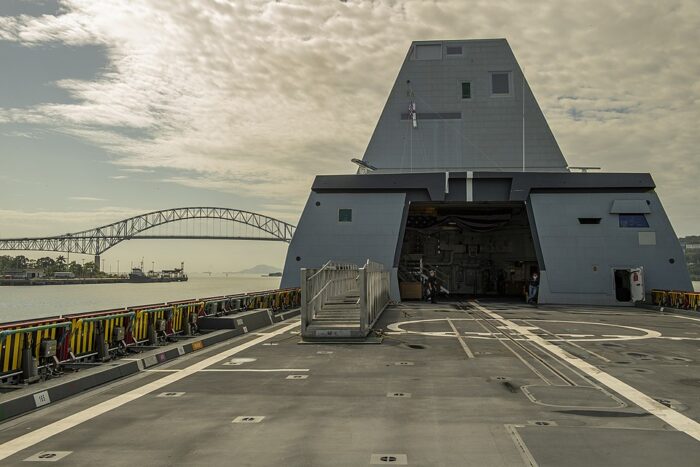
The Zumwalt class is equipped with a roomy hangar, large enough for two medium-sized helicopters side by side for ASW reconnaissance and attack, liaison and SAR duties, a task completed by a smal fleet if UAVs, not envisioned at the start. Two helicopters plus toom above them for all spare parts necessary for full engine change among others. There is a generous flight deck aft with the usual recovery/landing system, and enclosed hangar for up to two medium-lift helicopters.
Two spots available for the model chosen the SH-60 helicopter. Boats could be handled within the stern-mounted boat hangar aft, with a ramp as well. The boat hangar’s stern location was done to cope with high sea state requirements.
MH-60R helicopter
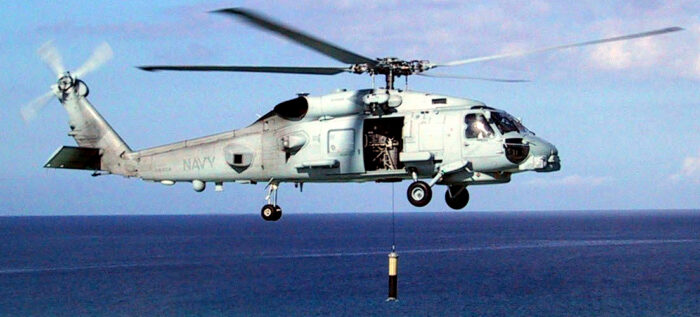
The MH-60R “Romeo” was known in the Navy as the LAMPS Mark III Block II Upgrade when developed from 1993 by Lockheed Martin. Two SH-60Bs were converted by Sikorsky (maiden flight 22 December 1999) as the YSH-60R, delivered to NAS Patuxent in 2001 with a production greenlighted as the MH-60R service start in 2006.
The MH-60R combines the assets of the SH-60B and SH-60F with more compact avionics for dual controls, 8″x10″ night vision goggle-compatible, sunlight-readable color multi-function displays, new glass cockpit by Owego Helo Systems (Lockheed Martin).
The full suite comprised the following:
-AAR-47 Missile Approach Warning (ATK)
-AAS-44 electro-optical system with FLIR/laser rangefinder (Raytheon)
-ALE-39 decoy dispenser
-ALQ-144 infrared jammer (BAE Systems)
-ALQ-210 electronic support measures system (Lockheed Martin)
-APS-147/153 multi-mode radar/IFF interrogator with ARPDD capability (Telephonics).
-AN/AQS-22 advanced airborne low-frequency sonar (ALFS) (Raytheon/Thales)
-ARC-210 voice radio (Rockwell Collins)
-Advanced airborne fleet data link SRQ-4 Hawklink+ ARQ-59 radio terminal (L3Harris)
-LN-100G dual-embedded GPS and inertial navigation system (Northrop Grumman/Litton div.)
-MAD-XR2020 (CAE) with magnetic anomaly detector (MAD)
-Mk-54 air-launched torpedoes
-Hellfire missiles.
MQ-8 Fire Scout
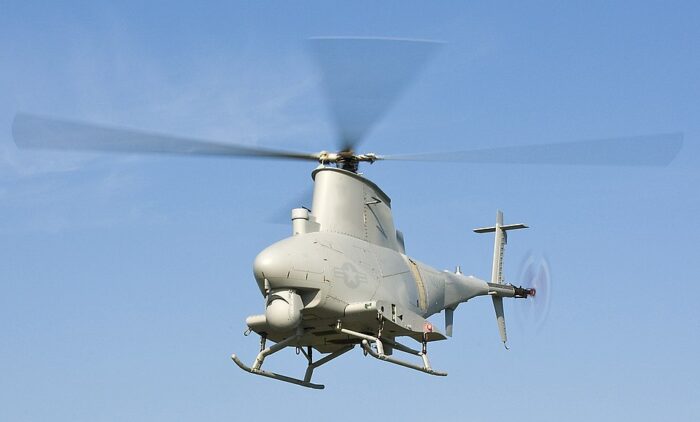
The Northrop Grumman MQ-8 Fire Scout is an unmanned autonomous helicopter, developed by Northrop Grumman, for reconnaissance, situational awareness, aerial fire support, precision targeting support, derived from the Schweizer 330. MQ-8B from the Schweizer 333 and MQ-8C Fire Scout fom the Bell 407. By February 2018, 23 MQ-8Bs were in service, but they were retired by October 2022. It was merely tested on board USS Zumwalt.
Sensors: AN/SPY-3
Original Plan: AN/SPY-3+ AN/SPY-4
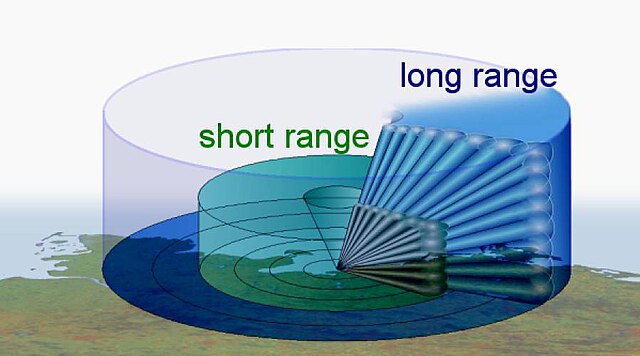
Originally, the Zumwalt class went with an X band AN/SPY-3 active electronically scanned array radar, to be coupled with the AN/SPY-4 S-band volume search radar. The first was design to offer superior medium to high altitude performance over other radar bands. It uses pencil beams for excellent ability to focus on targets, also used for missile engagements (so part of the FCS). However, in the 2005 report by Congress’ investigative arm, the GAO questioned if the technology leap brought by the Dual Band Radar would be too much. On 2 June 2010 it was announced, following this, the cancellation of the SPY-4 S-band Volume Search Radar from the DDG-1000 suite to reduce costs (Nunn–McCurdy certification process). In response, the SPY-3 radar had its software modified to take its place basically, adding volume search functionality, at the cost of a horizon search capability more limited. The DDG-1000 was envisioned for local area air defense. Still it is valuable for high detection, with excellent anti-jamming capabilities with the CEC, but the latter was not installed immediately at commissioning.
Fire Control
In the absence of the AN/SPG-62 fire-control radar for terminal guidance for the ESSM Block 1, the SPY-3 takes its place, generating Interrupted Continuous Wave Illumination (ICWI) instead of the usual Continuous Wave Illumination, which required significant software modifications. In addition, costs were raised to design a unique type of Standard Missile (SM)-2 IIIA and ESSM tailored in accordance to the Zumwalt class. The manufacturer was forced to design for them new receivers, transmitters, encoders, decoders, digital signal processor, excluding them for the Aegis system used by Arleigh Burke destroyer.
The SPY-3 also had to be reprogrammed to do the volume search, and it was believed a large-scale missile attack could overwhelm its resource management capacity. This made it also incapable of guide offensive missiles. A serious drawback in capabilities. The Block III Arleigh Burke in that topic will be far more efficient. However, let’s remember the Zumwalt originally where design for shore bombardment first and foremost.
The Dual Band Radar SPY-3 & SPY-4 was only installed on the Gerald R. Ford-class aircraft carrier class, however, making it the most capable and complex aircraft carrier ever built. In between, Raytheon and partners developed the AN/SPY-6 Air and Missile Defence Radar (AMDR) as a replacement. The Enterprise Air Surveillance Radar (EASR) already is currently installed on the second Gerald R. Ford-class, USS John F. Kennedy. So the Dual Band radar is a one-off only used by the first super carrier and envisioned for the DDG-1000 class only.
Cancelled: SPY-6
The much more capable AN/SPY-6 AMDR was also originally proposed for the DDG-1000 (CG(X) program), to be stretched out and create a cruiser. But the latter was cancelled while AN/SPY-6 AMDR was still developed in parallel for installation on the Arleigh Burke Flight III, with retrofit on the Flight IIA. But due to a smaller aperture of 14 feet (4.3 m) it will be less sensitive than the 22 feet (6.7 m) variant of the planned CG(X). Work was done to create a 22-foot (6.7 m) aperture mostly for Ballistic Missile Defense (BMD), and since the DDG-1000 lacked the Aegis Combat System, it was decided not to install it in the end.
Computing & Display
The Common Display System or “keds” was developed to enable specialists and operators to interact via trackballs and specialized button panels, with touchscreens option on the interface. The system was developed to monitor a full array of weapons systems or sensors with a reduced manpower. The ship could even be steered from the ops center, protected by kevlar panels, unlike the bridge, a modern reinterpretation of the conning tower. The Computer network is based around the Total Ship Computing Environment Infrastructure (TSCEI), developed from the General Electric Fanuc Embedded Systems, PPC7A and PPC7D, both single-board computers running Lynux Works’ Lynx OS Real-time operating system (RTOS). They are contained in sixteen modular cells proof against shock, vibration, and electromagnetic interferences. There were sixteen pre-assembled IBM blade servers assembled to run the system also inside the CO, with a focus on seamless integration of all onboard systems and sensor fusion for better mission planning.
Sonar
On board Zumwalt, ASW detection was solid as well, with a dual-band sonar controlled by a highly automated computer system capable also of detecting mines like all types of submarines, and enhanced database acoustic detection based on recorded sound patterns. This suite was claimed superior to the Arleigh Burke class system for littoral operations (the trademark of the Zumwalt) but less for blue water or deep sea operations. The system comprises the following for the detail:
-Hull-mounted mid-frequency sonar AN/SQS-60
-Hull-mounted high-frequency sonar AN/SQS-61
-Multi-function towed array sonar and associated handling system AN/SQR-20.
This multi-function towed array however could only work in conjunction with its helicopters or VL-ASROCs. Despite is massive size, the Zumwalt has no on board 324 mm torpedo tubes.
⚙ specifications |
|
| Displacement | 15,656 long tons (15,907 t) |
| Dimensions | 610 x 80.7 x 27.6 ft (190 x 24.6 x 8.4 m) |
| Propulsion | 2× shafts RR MT30 gas turbines+ CW EG, 2x RR4500 turbine gen. 78 MW (105,000 shp) |
| Speed | 30 kn (56 km/h; 35 mph) |
| Range | Classified |
| Armament | 20 × Mk 57 VLS (80): RIM-162, Tomahawk, SM-6, RUM-139. 2x 155 mm, 2× 30 mm Mk 46 GWS |
| Protection | Stealth, kevlar, see notes |
| Sensors | AN/SPY-3 AESA MFR, AN/SQS-60/61/20 sonar. |
| Air Group | 1/2x MH-60R helicopter(s), +3 × MQ-8 Fire Scout VT-UAVs |
| Crew | 147 +28 in air detachment |
Career of the Zumwalt class (so far)
 USS Zumwalt (DDG-1000)
USS Zumwalt (DDG-1000)
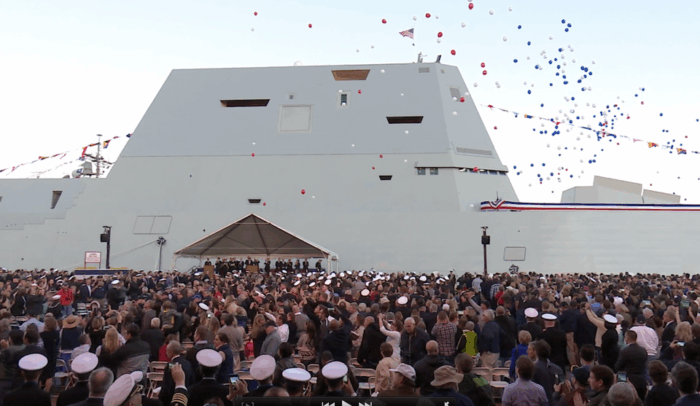
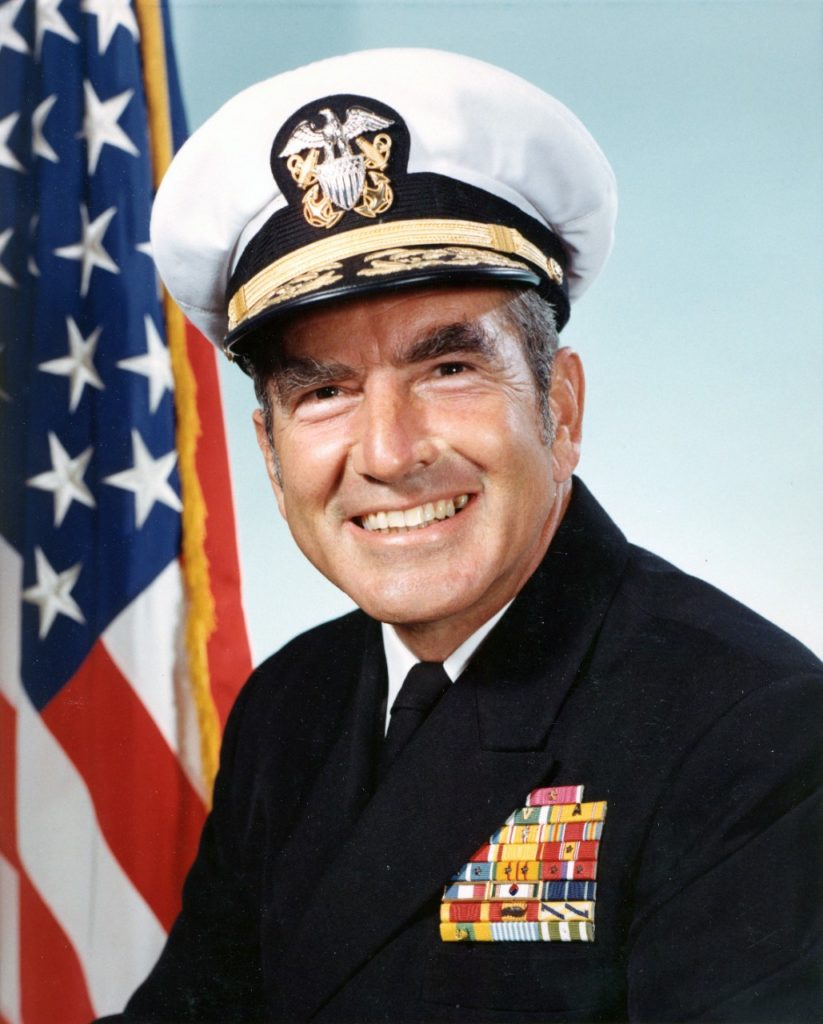 Zumwalt is named after Elmo Russell Zumwalt Jr., the youngest Chief of Naval Operations of the USN and admiral during the Vietnam War, a highly decorated war veteran, trying to improve enlisted life and ease racial tensions. The destroyer received the unusual, symbolic designation DDG-1000, in parallel to a designation that ran to DDG-139 in 2022 (Arleigh Burke-class) after the WW2 three digit designations were halted. The reasoning was she was a “gun destroyer” and followed the sequence left off in 1983 by the Spruance class DD-997, USS Hayler.
Zumwalt is named after Elmo Russell Zumwalt Jr., the youngest Chief of Naval Operations of the USN and admiral during the Vietnam War, a highly decorated war veteran, trying to improve enlisted life and ease racial tensions. The destroyer received the unusual, symbolic designation DDG-1000, in parallel to a designation that ran to DDG-139 in 2022 (Arleigh Burke-class) after the WW2 three digit designations were halted. The reasoning was she was a “gun destroyer” and followed the sequence left off in 1983 by the Spruance class DD-997, USS Hayler.
As een above, she was awarded on 14 February 2008, built at Bath Iron Works at a cost of c$3.5 billion-4.4 billion adjusted for inflation but not taking account of R&D. She was laid down on 17 November 2011, launched on 28 October 2013 but christened on 12 April 2014, then commissioned on 15 October 2016. The longest construction of any destroyer in US history, even superior to most battleships. But the “package” of bold innovations she represented is head and shoulders above the most complicated warships of the day, even the Nimitz class. She renewed with the innovations of USS Enterprise and Long Beach.
In January 2014, she started her heavy weather trials, demonstrating how her sensitive equipments could withstand the battering of heavy seas and blasting winds. Her wave-piercing inverted bow and tumblehome hull reduced her radar cross-section but there were serious concerns about lateral and vertical accelerations, pitch and roll, and a lot of sensors were put in pace to take tons of data. Later tests followed on fuel loading, tests of the data center, propulsion, X-band radar, mission systems, networking, with the accent placed on modularity tolerances and electrical consumption, ventilation, cabling tensions, for the future integration of electronics still not completed yet. Only after all this she had her final builders’ trials, and acceptance trials, then delivery for Navy tests, by late 2014, and her initial operating capability (IOC) scheduled for 2016.
This was done under her first commanding officer (CO), Captain James A. Kirk, which the media loved because of its likeness wit the Star Trek TV show’s namesake. Shatner even wrote a letter of support to Zumwalt’s crew, by April 2014. You may be surprised also how much the show was popular in the Navy, which after all had a lot of terminology related to the sea and naval warfare at large. And did i mention USS Enteprise ?.
By December 7, 2015, USS Zumwalt departed Bath Iron Works for navy sea trials with contractors on board to monitor the final tests of all combined systems working together, operated under rigorous conditions to determine as she could be at last actively commissioned. On December 12, 2015, still in sea trials, she answered a US Coast Guard call for assistance, and sailed towards a fishing boat captain facing a medical emergency, some 40 nautical miles (74 km) from Portland. It was in heavy weather and the helicopter, which took off, was unable to hoist the patient, however. So she closed further and the crew prepared and launched from her stern hangar her 11-meter rigid-hulled inflatable boat (RHIB) for a successful transfer on board, and then re-transferred by a Coast Guard helicopter to shore. The USN accepted delivery on May 20, 2016 at last, eight years after she was ordered. In September 2016, she needed repairs after a seawater leak in her auxiliary motor drive oil system was detected. The final commission was signed on October 15, 2016, in Baltimore, and she was prominently featured, in full regalia, at Fleet Week.
On November 21, 2016, Zumwalt lost her port shaft while underway through the Panama Canal, transferred to the Pacific and San Diego. Water seeped into two of the four bearings connecting her port and starboard Advanced Induction Motors, then to the drive shafts. Both eventually failed, so she shifted by mass alone and struck the lock walls, fortunately at very slow speed, causing minor surface damage. Her difficult passage was completed with tugboats as she needed to leave it fast, many other ships waited behind their turn. She had initial repairs at Vasco Núñez, Balboa Naval Base and sailed to San Diego NS. Upon arrival the leak was found to come from a lubrication cooling system. Captain Kirk was saluted as being prudent on this by taking assistance.
It seems she was on various sea trials in the Pacific in 2017 and 2018 and of course her shipyard availability.
In April 2019, she departed San Diego at last for her operational deployment into the Pacific, sailing north, visiting Ketchikan in Alaska to test her stability trials in icy cold, stormy seas in State 6. Next she sailed south for the pristine and warm waters of Pearl Harbour, first visit of a Zumwalt Class to Hawaii. After her successful Pacific tests, she was accepted for final delivery in April 2020, but prepared for more tests.
She had availability in 2021. By September 2022 she had her first port call in Guam, while en route to Japan.
On August 1, 2023, she was back in the US, home ported to Ingalls Shipbuilding, Pascagoula, Miss. for a modernization and many technology upgrades.
This was completed by December 2024, and at that stage she had lost her two characterized turrets, replaced with new launchers for the Intermediate-Range Conventional Prompt Strike (IRCPS) missile project. As of today in July 2025, the system is still trialled. Future will tell if the integration is done properly or cancelled. If it is, the conversion of her two sisters is very likely. They will bring a shore capability that is currently missing in the USN.
 USS Michael Monsoor (DDG-1001)
USS Michael Monsoor (DDG-1001)
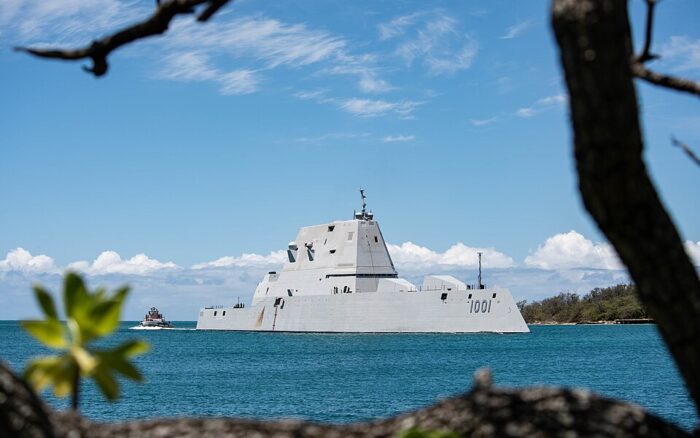
The second destroyer in class was named after Master-at-Arms Second Class Michael A. Monsoor (1981–2006), USN SEAL killed during the Iraq War, posthumously awarded the Medal of Honor. Modules Assembly started by March 2010, her keel was laid with an authentication ceremony for Michael Monsoor at General Dynamics-Bath Iron Works on 23 May 2013. She was launched on 21 June 2016. However, like her lead sister, completion was a long and protracted affair due to her complexity, despite her similarity with Zumwalt. On 4 December 2017, her complex electrical system failed and this abruptly ended her builders’ trials earlier than planned; She returned to General Dynamics Bath Iron Works, Maine for inspection. It was discovered that her harmonic filter failed just a day after she left the yard. From 5 December 2017 her troublesome harmonic filters, used for complex electrical systems to prevent power fluctuations damage, were all inspected and replaced. She was still planned for a March 2018 delivery. Like her sister she was to have a two-part commissioning, one prior to weapons systems integration, with the status of “in commission, special”, and going through the Panama canal to San Diego for weapons installation, final acceptance with the whole systems interactions. USS Lyndon B. Johnson however is scheduled to use a more traditional single, formal commissioning after final acceptance.
DDG-1002 was eventually delivered in April 2018, commissioned on 26 January 2019 at NAS North Island, homeported at NB San Diego. CNO Admiral Mike Gilday visited her as she was there, on 25 February 2021. She took part in the 40th annual San Francisco Fleet Week. Her first “operational” deployment was for RIMPAC 2022. In January 2022 she was back to Pascagoula. As of 2025 she is undergoing like her her sister a long modernization overhaul, including the removal and replacement of her turrets with missiles systems. Updates to come the following years.
 USS Lyndon B. Johnson (DDG-1002)
USS Lyndon B. Johnson (DDG-1002)
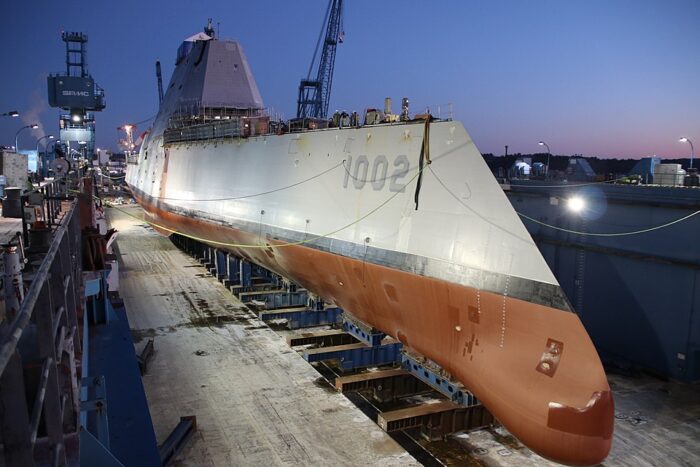
Like M. Monsoor was ordered to Pascagoula Naval Yard. She was named Lyndon B. Johnson, US president in the Vietnam War, so far a name not attributed to an Aircraft Carrier (the usual tradition), but given to the third and last of the Zumwalt class. DDG-1002 was laid down on 30 January 2017, launched on 9 December 2018 and underwent a long completion that was suspended to wait for the last modifications done on her sisters. Her final completion had been replanned for 2027, as of 2025. She had major differences with her sisters, starting with her steel deckhouse, for which the Navy published specs and solicited bids in January 2013, to lower costs, compared to the composite structure of the others. It is still calculated to meet tight weight margins and urged some weight savings in other parts.
By February 2015, the Navy revealed its plans to install an electromagnetic rail gun, as she was available for this conversion. What was found interesting was her powerful conventional power plant able to provide 80 megawatts. The rail gun was planned to replace the two Advanced Gun Systems. By March 2016, however, the rail gun was not ready, and construction went too far for its integration, so it was resolved to plan a future addition and makes integration easier by preparing support systems in advance. By 2022 the Navy however cancelled the rail gun development due to… costs overruns.
By September 2015, the DoD considered terminating funding prior to completion and suspend it altogether. However, a study showed it might have ended up actually costing more after paying program shutdown costs, contract termination penalties. By December 2015, funding and construction was resumed. Another “affair” was her initially planned a pair of AGSs, setup to only fire the LRLAP round, which procurement was cancelled in 2016 due to massive rounds costs with no plan of replacement. Like her sisters she re-purposed to surface warfare before even her ceremonial keel laying. She later christened on 27 April 2019, by Johnson’s daughters, Luci and Lynda.
On 12 January 2022, she left Bath for Ingalls Shipbuilding in Pascagoula, for the installation of her combat systems and full activations and tests, and initial entry into service planned by 2024 but postponed by the current administration. Updates to come.
Controversy and Hope
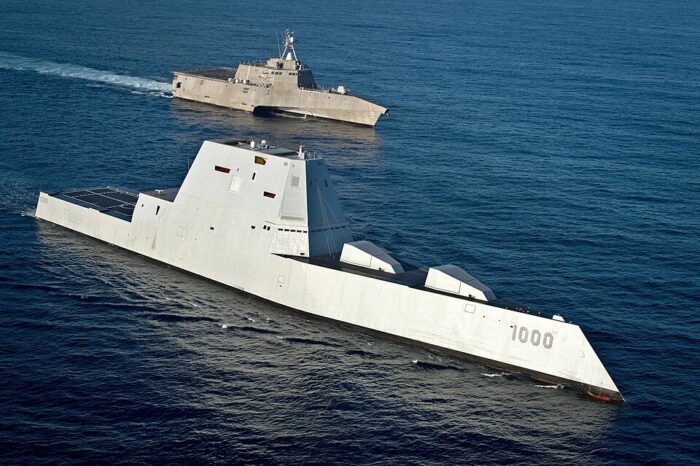
PACIFIC OCEAN (Dec. 8, 2016) The guided-missile destroyer USS Zumwalt (DDG 1000), left, the Navy’s most technologically advanced surface ship, is underway in formation with the littoral combat ship USS Independence (LCS 2) on the final leg of its three-month journey to its new homeport in San Diego. Upon arrival, Zumwalt will begin installation of its combat systems, testing and evaluation, and operation integration with the fleet. (U.S. Navy photo by Petty Officer 1st Class Ace Rheaume/Released)161208-N-SI773-0401
Join the conversation:
http://www.navy.mil/viewGallery.asp
http://www.facebook.com/USNavy
http://www.twitter.com/USNavy
http://navylive.dodlive.mil
http://pinterest.com
https://plus.google.com
Very little Bang for Bucks
An April 2018, GAO it was reported a total cost for the Zumwalt destroyer program, including R&D to be $24.5 billion—an total for a unit cost of $8 billion. Questions were raised at the Congress and elsewhere how much this was repairs in capabilities or meet what the USN really needed. In 2005, the Congressional Budget Office estimated an acquisition cost of $3.8 billion to $4 billion in 2007 so $1.1 billion more than USN estimate. The National Defense Authorization Act FY2007 famously stated:
The committee understands there is no prospect of being able to design and build the two lead ships for the $6.6 billion budgeted. The committee is concerned that the navy is attempting to insert too much capability into a single platform. As a result, the DD(X) is now expected to displace more than 14,000 tons and, by the navy’s estimate, cost almost $3.3 billion each. Originally, the Navy proposed building 32 next generation destroyers, reduced that to 24, then finally to 7 in order to make the program affordable. In such small numbers, the committee struggles to see how the original requirements for the next generation destroyer, for example providing naval surface fire support, can be met.
Mike Fredenburg reviewing the National Review in late 2016 also declared:
(…the ship’s problems) “are emblematic of a defense procurement system that is rapidly losing its ability to meet our national security needs.”
He pointed out skyrocketing costs, lack of accountability as well as unrealistic goals or in general a flawed concept of operations and complete failure of the Advanced Gun System due to poor planning and oversight.
The Zumwalt is an unmitigated disaster. Clearly it is not a good fit as a frontline warship. With its guns neutered, its role as a primary anti-submarine-warfare asset in question, its anti-air-warfare capabilities inferior to those of our current workhorse, the Arleigh Burke-class destroyers, and its stealth not nearly as advantageous as advertised, the Zumwalt seems to be a ship without a mission.
The ballistic air defence conversion
In January 2005, John Young (Assistant Secretary of the Navy) in charged or R&D and Acquisition, still praised the DD(X) air defence capabilities over the Arleigh Burke class, notably thanks to its new radar and combining SM-1, SM-2, and SM-6 and wanted to scrap the long awaited CG(X) as unnecessary.
On 31 July 2008 however, VADM Barry McCullough as Deputy CNO for Integration of Resources and Capabilities as well as Allison Stiller, Deputy Assistant Secretary of the Navy for Ship Programs declared that:
“The DDG 1000 cannot perform area air defense; specifically, it cannot successfully employ the Standard Missile-2 (SM-2), SM-3 or SM-6 and is incapable of conducting Ballistic Missile Defence.”
Dan Smith, president of Raytheon at its Integrated Defense Systems division, declared Zumwalt’s radar and combat system being on par with other SM-2-capable ships but recognized the lack of anti-ballistic missile capability. The Arleigh Burke-class indeed had this BMD systems thanks to their Lockheed-Martin AEGIS tracking and targeting software. The Raytheon TSCE-I targeting and tracking software and TSCE-I combat system does not offers that capability, not having the SM-2/SM-3 missile installed and BMD/IAMD upgrade planned at first for the CG(X). The Aegis system is the USB Navy chief combat system for 30 years now. The DDG-1000’s TSCE-I combat system was planned the BMD and IAMD upgrade, urged by China’s development of targetable anti-ship ballistic missiles based on the DF-21. So on 22 February 2009, James “Ace” Lyons (former CiC Pacific Fleet) declared this upgrade was essential for its future survival in a return to high intensity conflicts (notably with China).
In 2010, the Congressional Research Service reported the DDG-1000 still was denied the BMD as the role was still linked to the CG(X) program, the DDGs having the strike role, CG the BMD role albeit sharing indeed the SM3 and TSCE-I. Plus it was argued the CG(X)’s radar was much larger, used much more energy and cooling capacity, requiring as planned to stretch the DDG-1000 hull and boots its powerplant. Afterwards, the 22-foot (6.7 m) radar system was cancelled with the CG(X) and in between a new 14-foot (4.3 m) radar was developed, that can be fitted both on a DDG 51-or DDG-1000 albeit still sub-par “to address the most challenging threats” according to the Congress. To have the DDG-1000 integrated CG(X)’s BMD requirement needed first the TSCE-I upgrade planned for the cancelled the CG(X).
Crucially, a study showed a cost benefit for building Flight III Arleigh Burke-class with enhanced radars instead of fitting BMD to the Zumwalt-class as it required few changes from the Flight II to III. But cost increase could escalate “as possible requirements and expectations continue to grow.” There was little data for the same on a DDG-1000–class. Then it was also pointed out the Zumwalt’s limited missile magazines as they were designed as gun ships wit their entire bow section dedicated to a cancelled gun system and the missiles relegated to the sides.
It was discussed later how to have a more limited BMD hardware and software modifications to use at least the SPY-3 radar and Cooperative Engagement Capability for the SM-3 and a BMD capability like the Ticonderoga-class and Arleigh Burke-class Flight IIA. Or designing a BMD-specific to the Zumwalt-class.
The Zumwalt were never planned to have ballistic missile defence albeit their VLS had long and wide enough tubes to incorporate future long range missiles, and Raytheon was confident to achieve the conversion with few modifications.
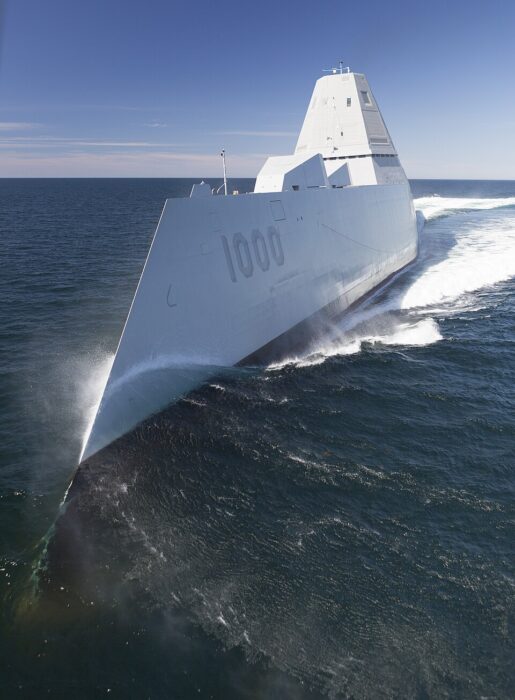
The “missile truck”
Another hope of making the Zumwalt somewhat useful was to return to one alternative to the project of replacing the Iowa class, namely from a conservative artillery carrier to a missile carrier, dedicated to both shore operations and oceanic engagements with saturation capabilities. The “strike carrier” of the 1980s, which was eventually cancelled. The original DD-21 design was fitted between 117 and 128 VLS cells, but the final DDG-1000 was given only 80 cells to free space for the gun system, which is laughable compared to the Arleigh Burke. Zumwalt’s specific Mk. 57 Peripheral Vertical Launching System (PVLS) still are larger than Mk 41 cells and could offer an advantage. Each VLS could host indeed four RIM-162 Evolved Sea Sparrow Missiles (ESSM) for a total of 320 ESSM missiles, but this is for point defence weapon so limited fleet area defence. The lack of Aegis system and instead used the “Total Ship Computing Environment Infrastructure” (TSCEI) mission system better suited for its shore bombardment primary mission. However, the Mk. 57 PVLS was sold as being capable to accommodate all Standard missile types.It
The ship’s design concept derived from the “Land Attack Destroyer (DD 21)” development so to sea-based fire support for landings and replace the Iowa-class battleships as mandated by Congress raised considerable scepticism and the cancellation of the gun system was its biggest blow. The Zumwalt class specialization in naval surface fire support (NSFS) using the AGS and Tomahawk missiles from PVLS launchers was the initial goal, and since the ships were re-purposed as surface attack vessels, not land attack destroyers. It remains to be seen if the two turrets could be converted as launchers for a new long range missile strike system.
Ability of the Zumwalt to defend itself
In 2005, a Critical Design Review (CDR) of the class led to the selection of the Mk. 110 57 mm (2.2 in) to defend against swarming attacks by small and fast boats, something only made ever more urgent by seeing what happened in Ukraine, but which was dictated by sea-born terrorist attacks on two Burke class DDs.
The Mk 110 is capable of 220 rpm and 9 nmi (17 km; 10 mi) range, and there were efforts to assess potential cost-saving alternatives. It was concluded later that the Mk. 46 30 mm (1.2 in) Gun System was more effective than the Mk. 110 with a 200 rpm plus range 2.17 nmi (4.02 km; 2.50 mi) and less weight and cost, meaning more can be installed.
Naval experts questioned that decision to replace these close-in swarm defence guns. The Mark 110 had a large range indeed, so better change of destroying the target as it went closer. The DDG-1000 program manager however was dubious about these 57 mm round’s lethality and lacked test-firing whereas the Mk. 46 met or exceeded requirements and performed equal or better than the 57 mm in multiple areas. The process of replacement is ongoing.
Hull Controversy
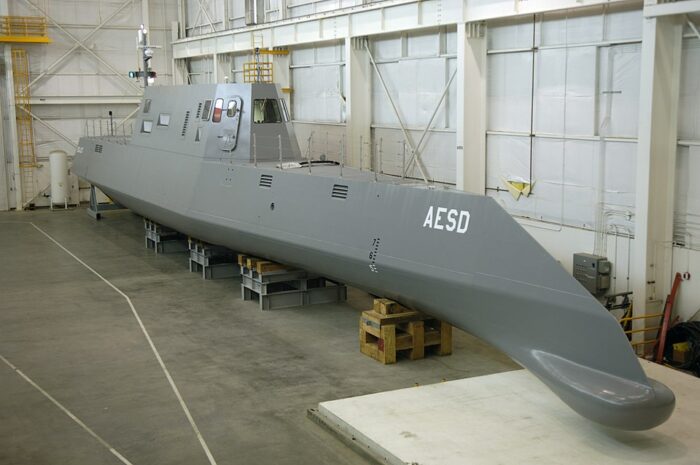
The Zumwalt class stability in heavy seas also had been a matter of controversy, originated in a statement in April 2007 by naval architect Ken Brower:
“As a ship pitches and heaves at sea, if you have tumblehome instead of a flare, you have no righting energy to make the ship come back up. On the DDG 1000, with the waves coming at you from behind, when a ship pitches down, it can lose transverse stability as the stern comes out of the water – and basically, roll over.”
The Navy ruled out the tumblehome hull for the CG(X) cruiser before cancellation, so it could raise eyebrows about realization of shortcomings on Zumwalt’s sea keeping abilities. Still this hull was thoroughly tested and proved seaworthy in a 1/4-scale test with the Sea Jet (photo). Funded by the Office of Naval Research (ONR) this 133-foot (40-meter) vessel is located at the Acoustic Research Detachment in Bay view, Idaho. It was operated on Lake Pend Oreille to demonstrate the hull and various technologies such as the underwater discharge water jet AWJ-21 from Rolls-Royce Naval Marine.
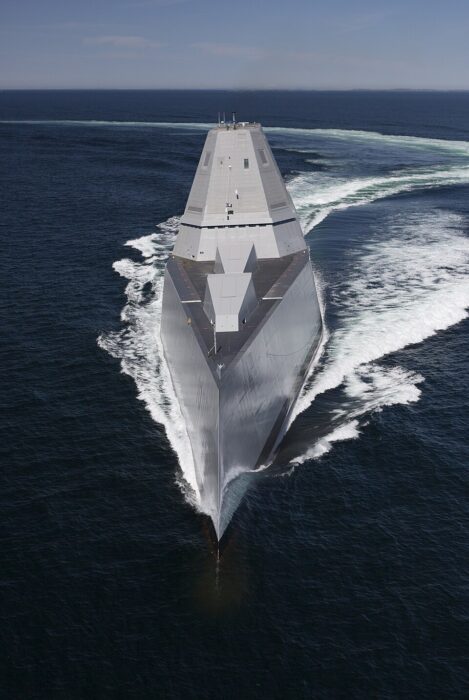
In between, by the spring of 2019, USS Zumwalt went through a storm in sea state 6 with 13 and 20 feet (4-6 m) waves, off the coast of Alaska. It showed the Zumwalt class possessed in reality greater stability compared to typical hull forms. Captain Andrew Carlson even declared in these conditions he wanted to be on this ship rather than any other. It was not about its hull form, but rudder stop locations and propeller size that contributed to the success.
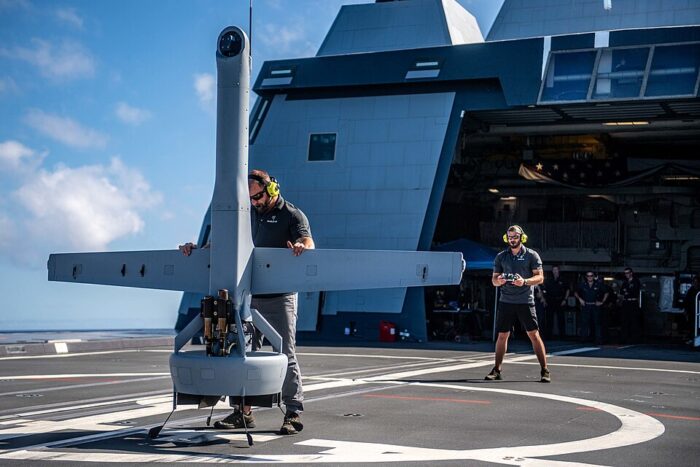
Read More/Src
Links
secretprojects.co.uk cg-x air dominance cruiser
navypedia.org/ us dd zumwalt
navy.mil Resources destroyers-ddg-1000/
globalsecurity.org/ cg-x.htm
globalsecurity.org/ cgn-x.htm
web.archive.org Raytheon.com/ ddg_1000/
navweaps.com/ AGS
man.fas.org C1031.htm
bloomberg.com
en.wikipedia.org
alchetron.com
marinevesseltraffic.com
surfpac.navy.mil/

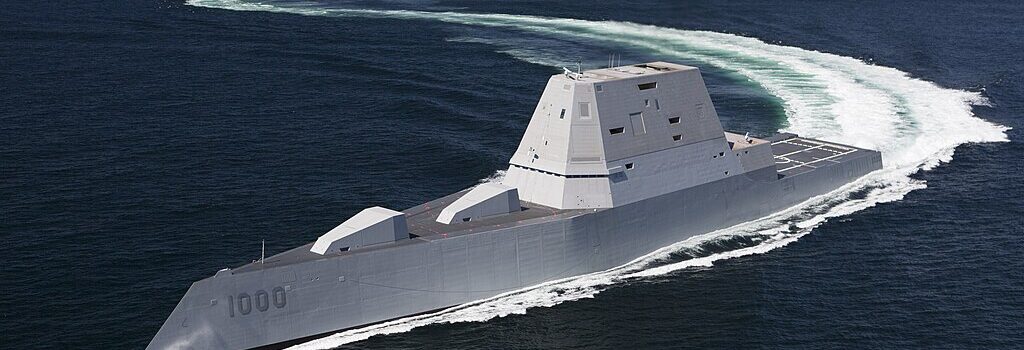
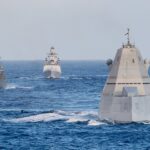
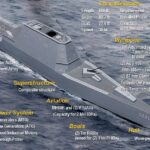
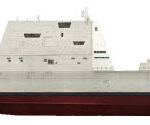
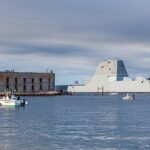
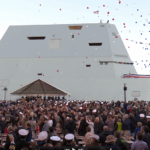
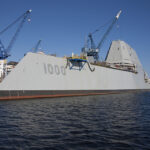
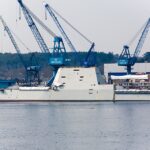
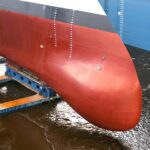
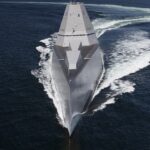

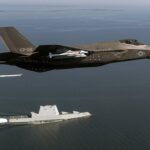
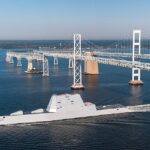
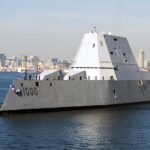
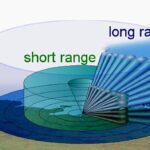
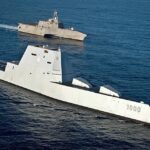
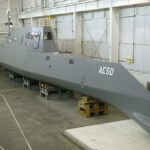
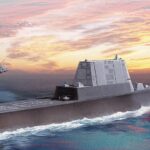
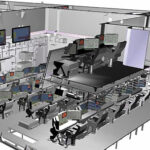
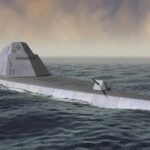
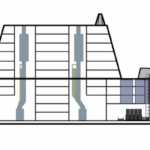
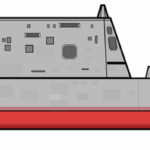
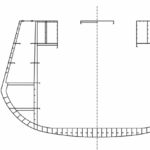
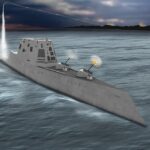
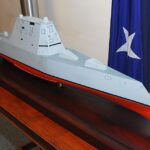
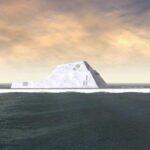
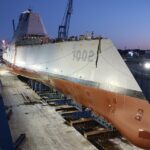
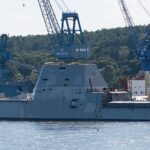
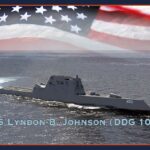

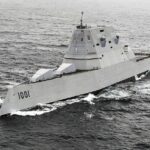
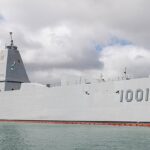
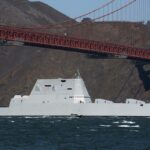
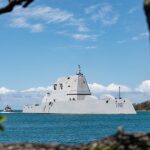
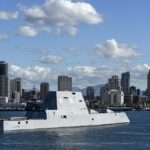
 Latest Facebook Entry -
Latest Facebook Entry -  X(Tweeter) Naval Encyclopedia's deck archive
X(Tweeter) Naval Encyclopedia's deck archive Instagram (@navalencyc)
Instagram (@navalencyc)





 French Navy
French Navy Royal Navy
Royal Navy Russian Navy
Russian Navy Armada Espanola
Armada Espanola Austrian Navy
Austrian Navy K.u.K. Kriegsmarine
K.u.K. Kriegsmarine Dansk Marine
Dansk Marine Nautiko Hellenon
Nautiko Hellenon Koninklije Marine 1870
Koninklije Marine 1870 Marinha do Brasil
Marinha do Brasil Osmanlı Donanması
Osmanlı Donanması Marina Do Peru
Marina Do Peru Marinha do Portugal
Marinha do Portugal Regia Marina 1870
Regia Marina 1870 Nihhon Kaigun 1870
Nihhon Kaigun 1870 Preußische Marine 1870
Preußische Marine 1870 Russkiy Flot 1870
Russkiy Flot 1870 Svenska marinen
Svenska marinen Søværnet
Søværnet Union Navy
Union Navy Confederate Navy
Confederate Navy Armada de Argentina
Armada de Argentina Imperial Chinese Navy
Imperial Chinese Navy Marinha do Portugal
Marinha do Portugal Mexico
Mexico Kaiserliche Marine
Kaiserliche Marine 1898 US Navy
1898 US Navy Sovietskiy Flot
Sovietskiy Flot Royal Canadian Navy
Royal Canadian Navy Royal Australian Navy
Royal Australian Navy RNZN Fleet
RNZN Fleet Chinese Navy 1937
Chinese Navy 1937 Kriegsmarine
Kriegsmarine Chilean Navy
Chilean Navy Danish Navy
Danish Navy Finnish Navy
Finnish Navy Hellenic Navy
Hellenic Navy Polish Navy
Polish Navy Romanian Navy
Romanian Navy Turkish Navy
Turkish Navy Royal Yugoslav Navy
Royal Yugoslav Navy Royal Thai Navy
Royal Thai Navy Minor Navies
Minor Navies Albania
Albania Austria
Austria Belgium
Belgium Columbia
Columbia Costa Rica
Costa Rica Cuba
Cuba Czechoslovakia
Czechoslovakia Dominican Republic
Dominican Republic Haiti
Haiti Hungary
Hungary Honduras
Honduras Estonia
Estonia Iceland
Iceland Eire
Eire Equador
Equador Iran
Iran Iraq
Iraq Latvia
Latvia Liberia
Liberia Lithuania
Lithuania Mandchukuo
Mandchukuo Morocco
Morocco Nicaragua
Nicaragua Persia
Persia San Salvador
San Salvador Sarawak
Sarawak Uruguay
Uruguay Venezuela
Venezuela Zanzibar
Zanzibar Warsaw Pact Navies
Warsaw Pact Navies Bulgaria
Bulgaria Hungary
Hungary

 Bundesmarine
Bundesmarine Dutch Navy
Dutch Navy Hellenic Navy
Hellenic Navy Marina Militare
Marina Militare Yugoslav Navy
Yugoslav Navy Chinese Navy
Chinese Navy Indian Navy
Indian Navy Indonesian Navy
Indonesian Navy JMSDF
JMSDF North Korean Navy
North Korean Navy Pakistani Navy
Pakistani Navy Philippines Navy
Philippines Navy ROKN
ROKN Rep. of Singapore Navy
Rep. of Singapore Navy Taiwanese Navy
Taiwanese Navy IDF Navy
IDF Navy Saudi Navy
Saudi Navy Royal New Zealand Navy
Royal New Zealand Navy Egyptian Navy
Egyptian Navy South African Navy
South African Navy






























 Ukrainian Navy
Ukrainian Navy dbodesign
dbodesign